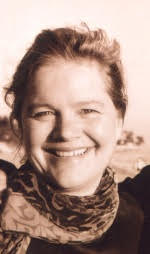Psycho-Peristalsis in the Shared Body
In this article we offer our experiences working with psycho-peristalsis within the intersubjective field, within the shared body, with curiosity: what potential benefits may arise by using psycho-peristalsis in this way?
The Bodynamic Psychotherapy System’s Approach to “Rebirthing” – a Re-orienting Birth Model
We believe that the origin of some problems in life can be traced back to the pre – and perinatal period. Then they can be resolved, and new patterns can be learned and integrated – the old problem disappears and new ways of living can begin. This can happen no matter how old the person is.
Be Your Own Super-Hero Embodying Your Vision
What might happen if you envisioned a second version of yourself, a personal avatar that embodied knowledge for attaining your goals, for guiding your life or for improving your tennis game?
The Handbook of Body Psychotherapy and Somatic Psychology: A Day Long Celebration
In today's cultural climate, it's essential to appreciate that people live in systems of oppression. We need to ask ourselves: What is it like to live within that system, a system that is not going away? How do you leave therapy and go back to that prejudicial system? How do you work with the internalization of oppression on part of the self?
The Prenatal and Perinatal History: A Vital Component of Effective Holistic Practice
For the past 25 years, I have educated professionals in prenatal and perinatal psychology. I have found that the potential connection between their clients’ current therapeutic issues and their prenatal and perinatal experience is often a rather mysterious terrain for most practitioners. More practitioners now recognize that these early experiences are important and have appreciation for “prenatal stress” and “birth trauma” as significant, but fewer feel confident to systematically identify, assess, and work with this developmental period and its long-term repercussions in their practice.
Organic Intelligence
Even in somatic psychotherapy circles we still don’t appreciate enough just how fully physical behavior is. The implicit, or body memory, is not at all linear— not one event per behavior. There could be, and likely are, numerous events that might rise to threshold for recollection, and which are associated with any state, any emotion, any behavior.
The Handbook of Body Psychotherapy and Somatic Psychology: A Day LongCelebration
Post-modern challenges to embodiment and human vitality: a view from the street and the therapy room with Gustl Marlock
Thoughts about Addiction, Memory, Trauma and Somatic Experiencing®
Having no memory of an event does not mean it has no impact on one's life. These 'forgotten' events might still affect people's perceptions, emotions and behaviors without them ever being able to make a connection between present and past or process them verbally at a therapeutic session.












